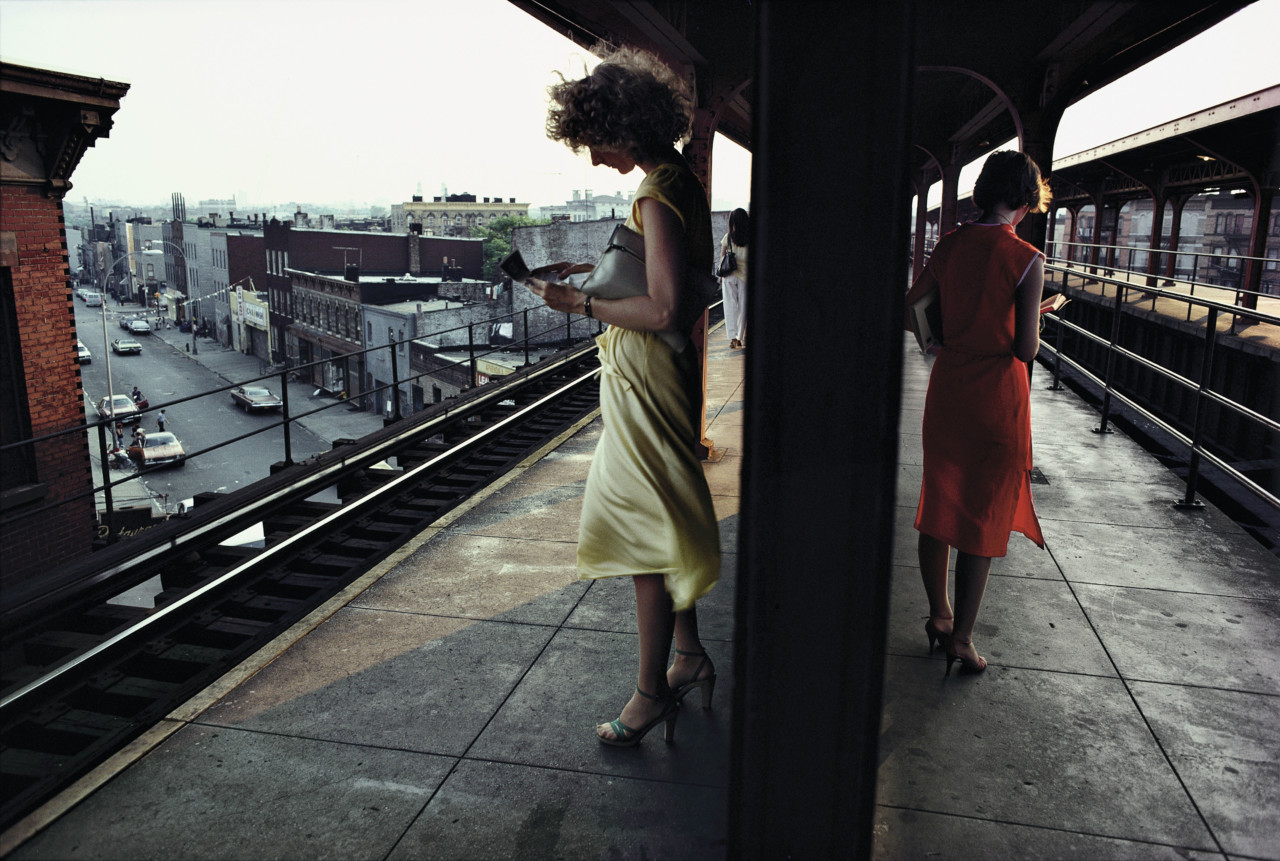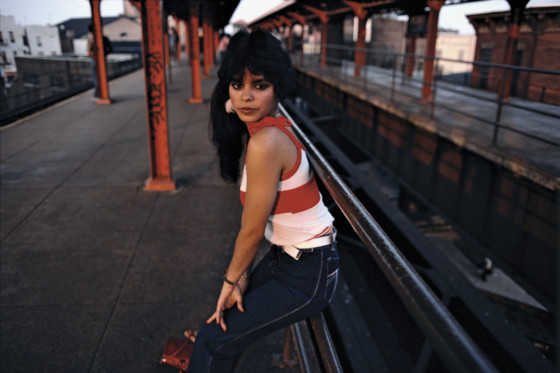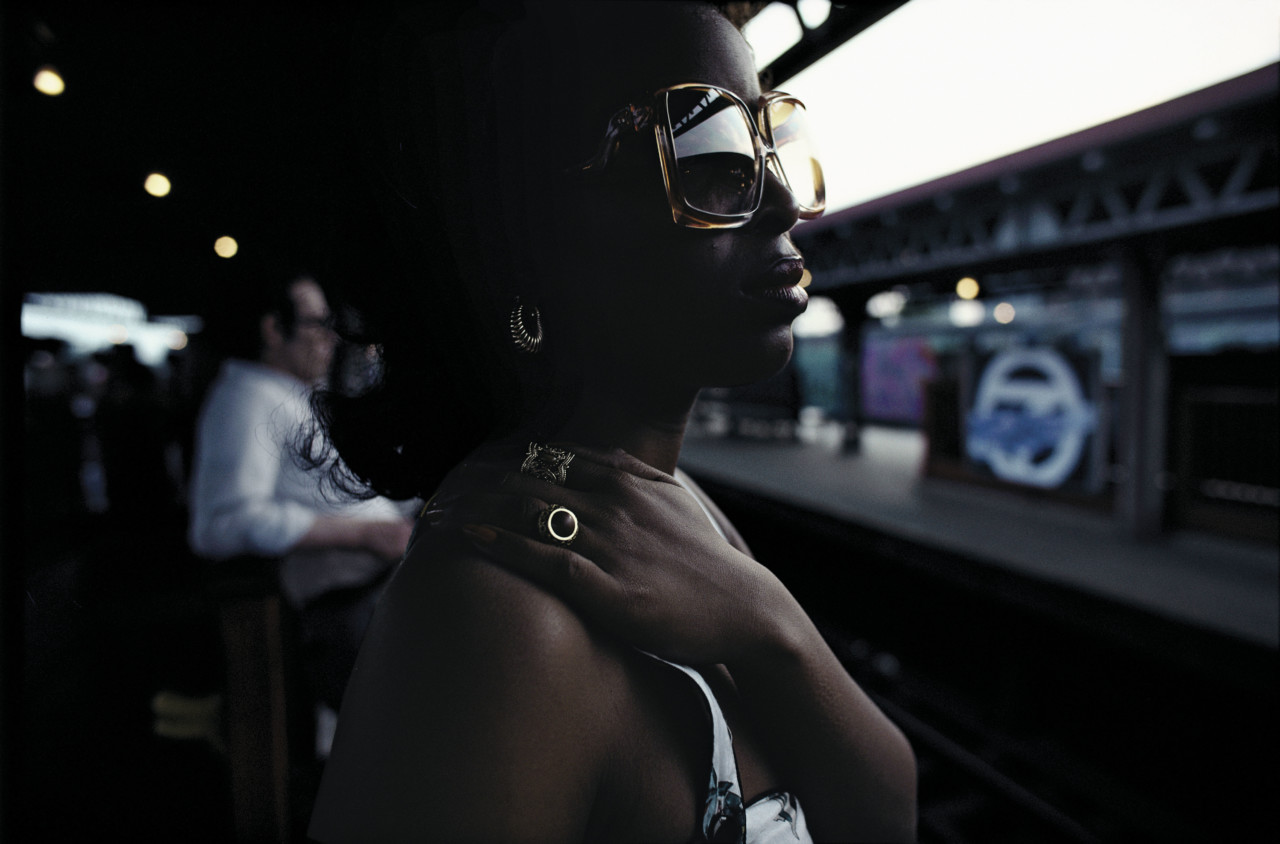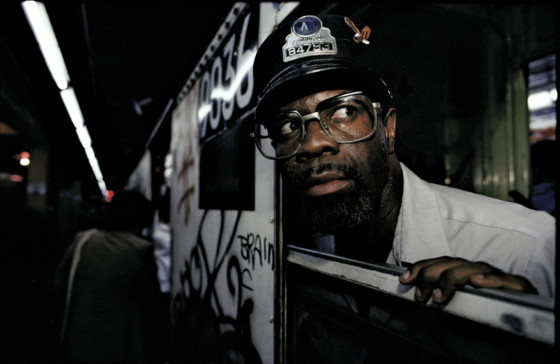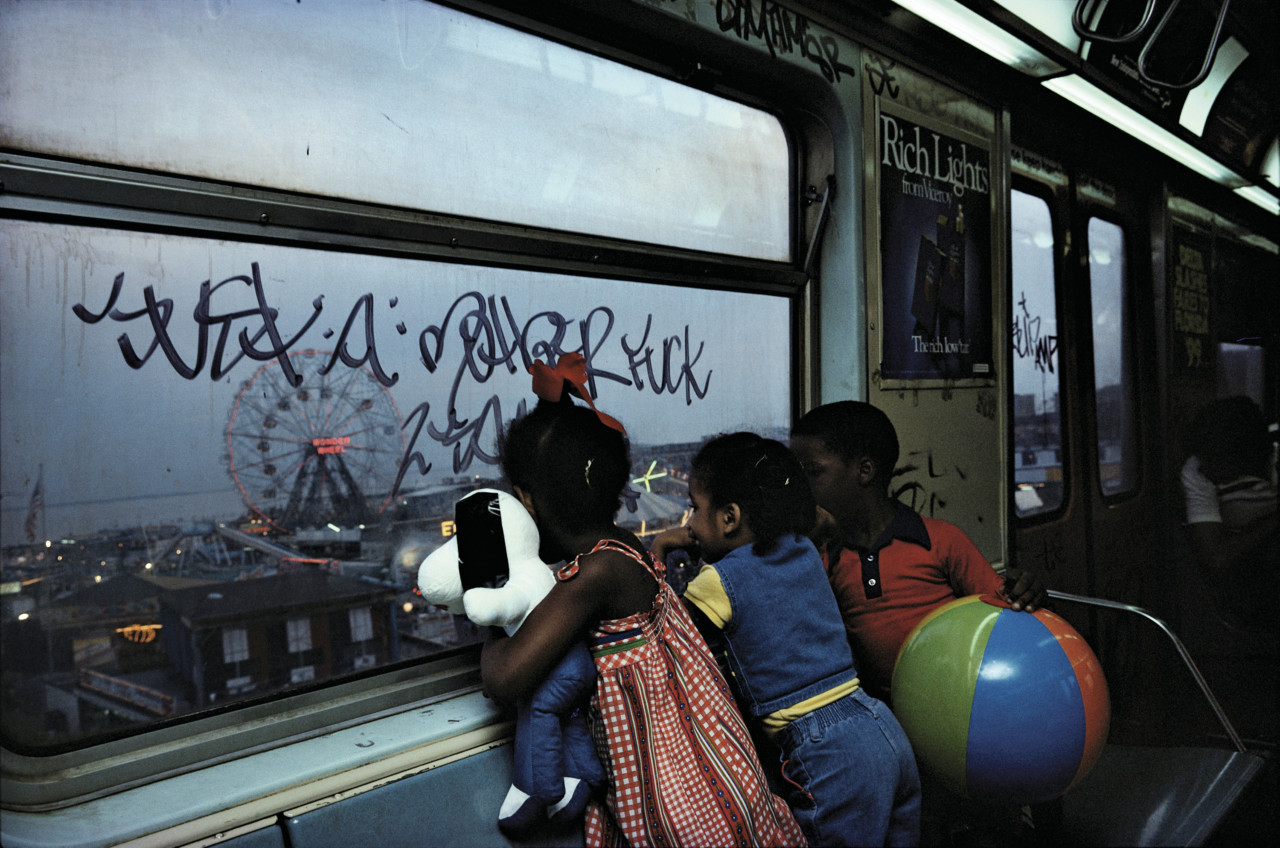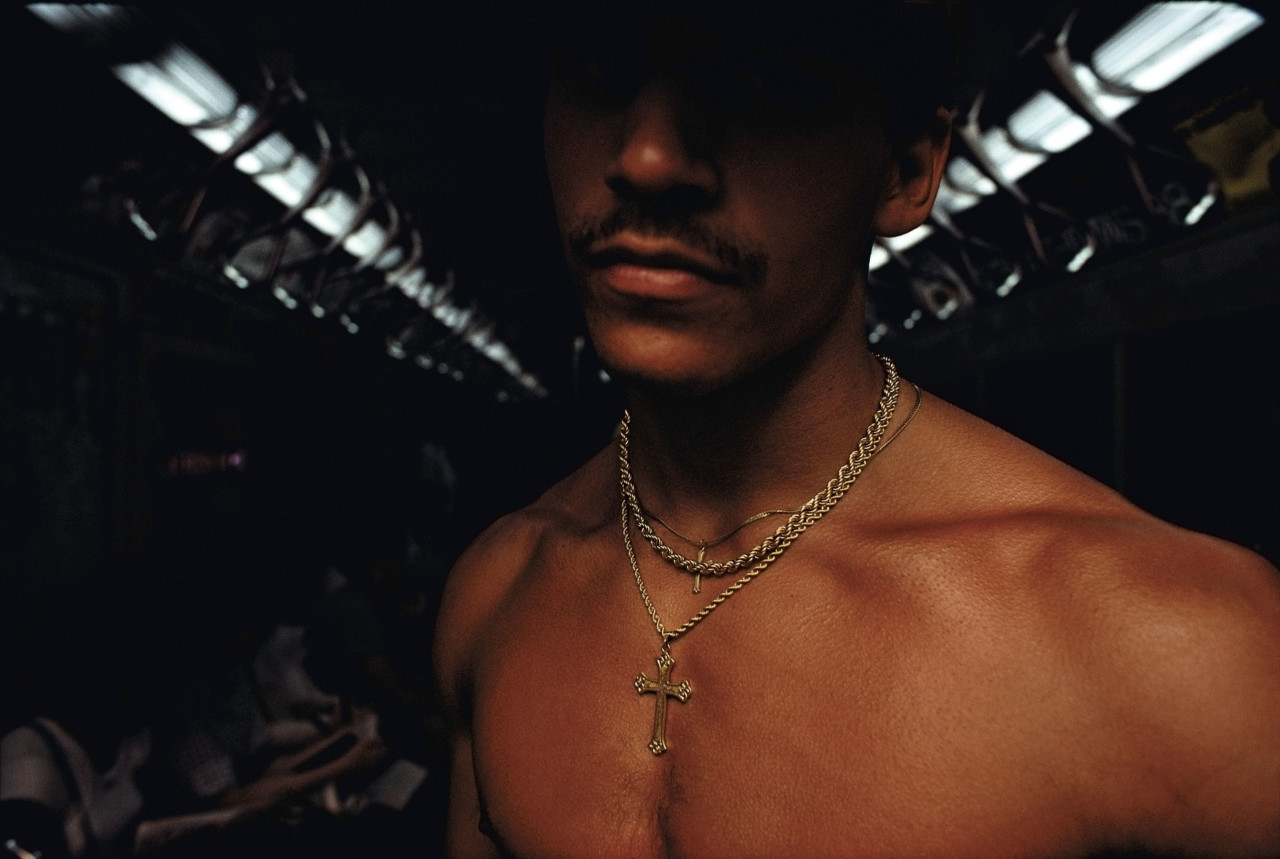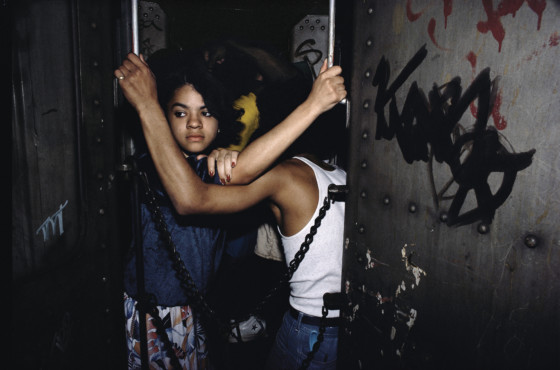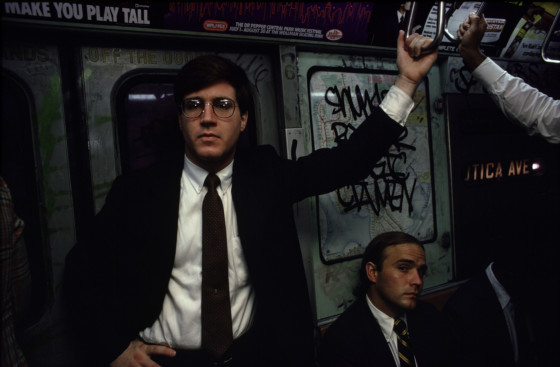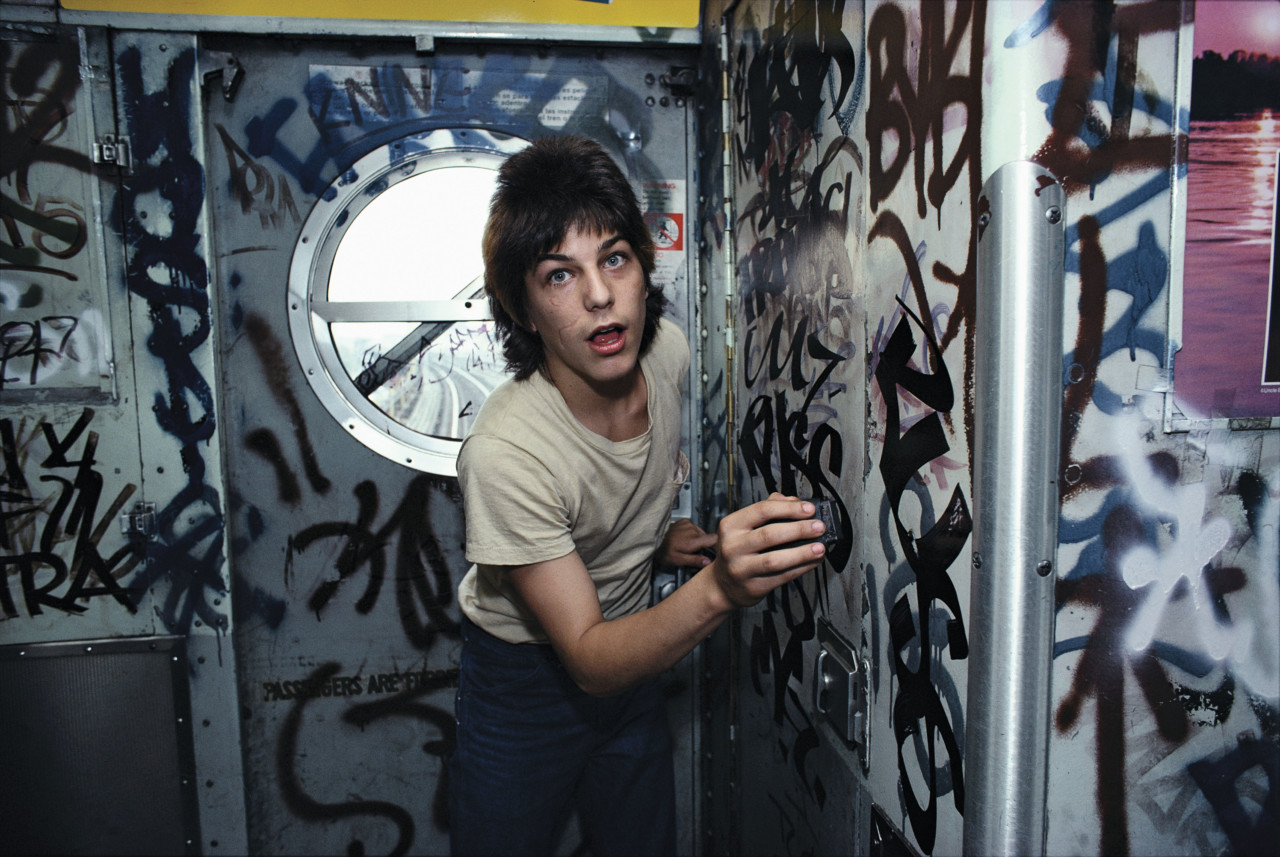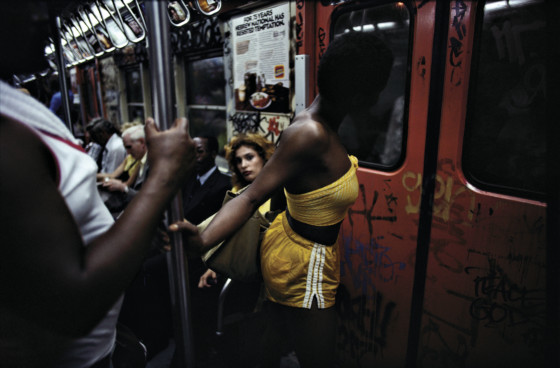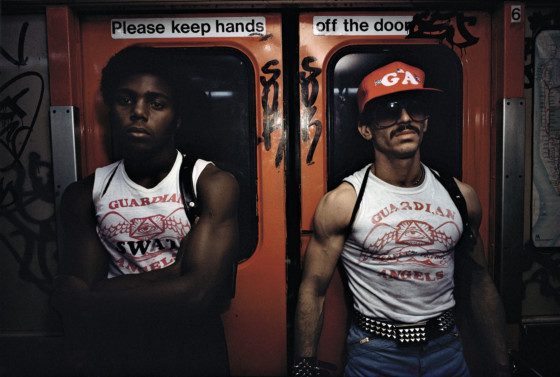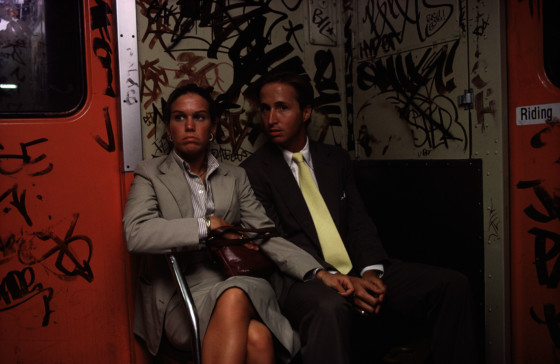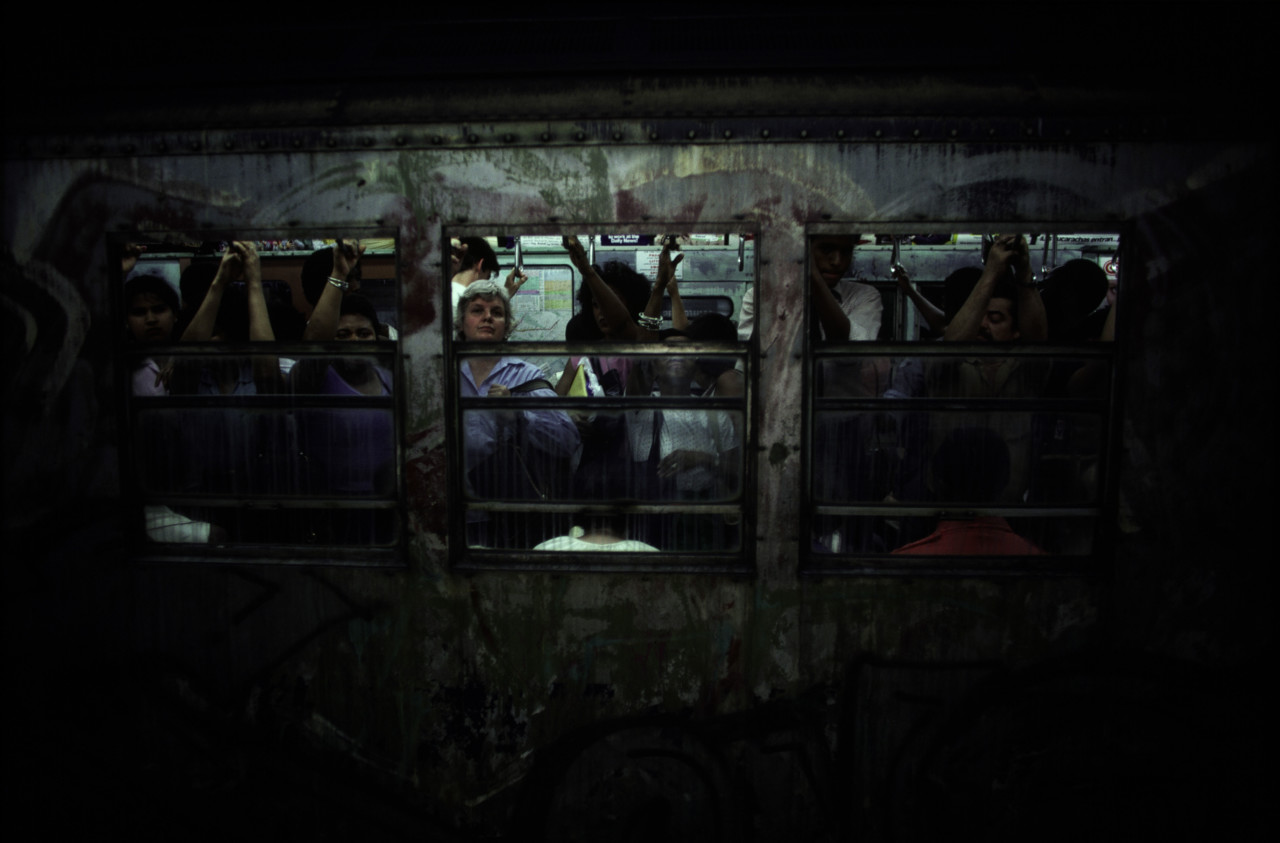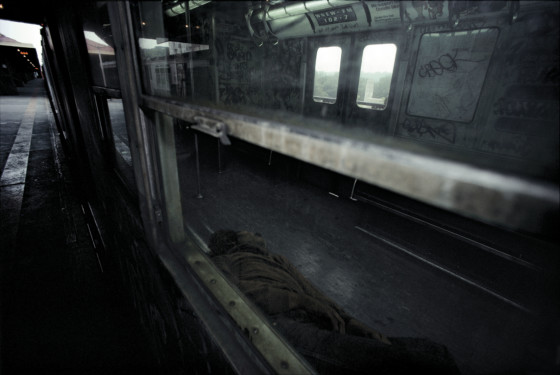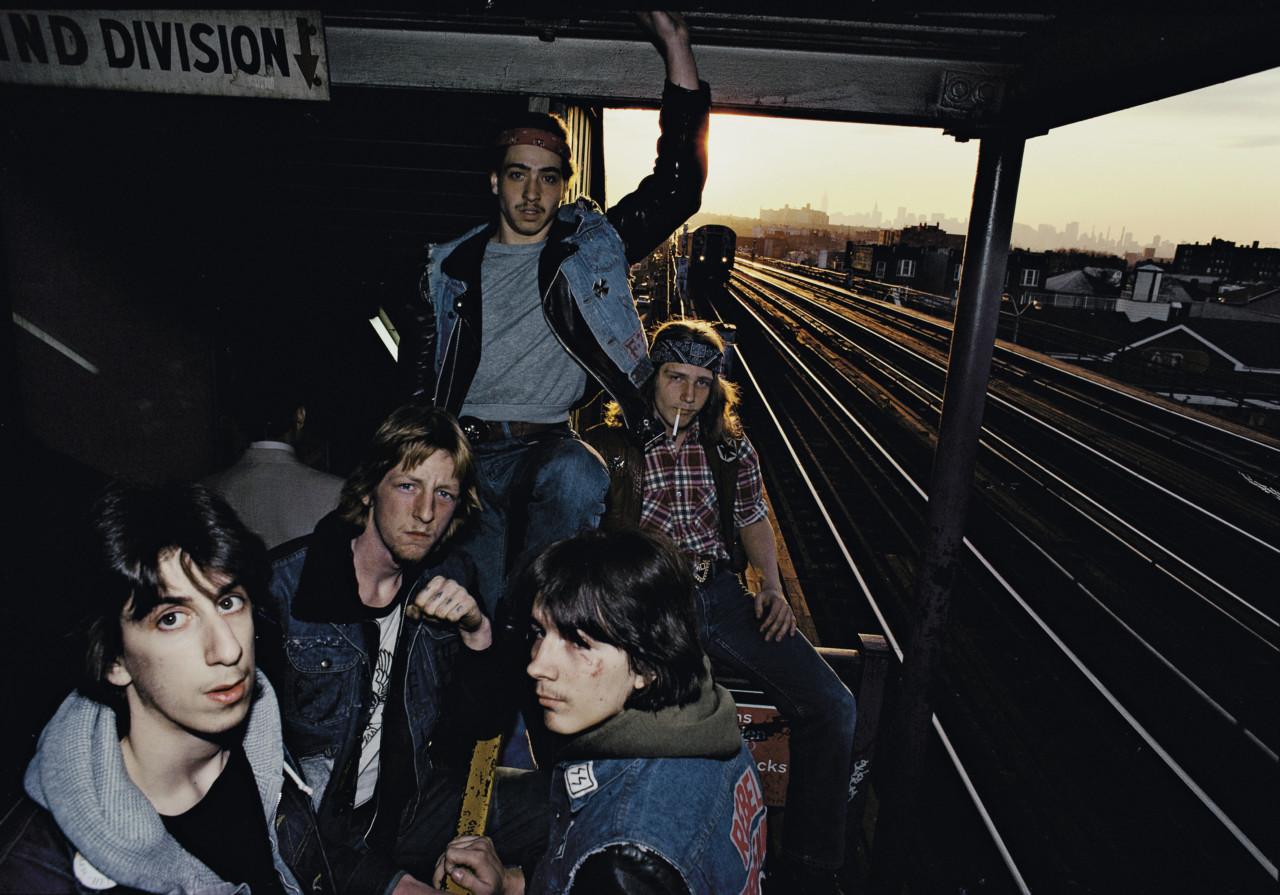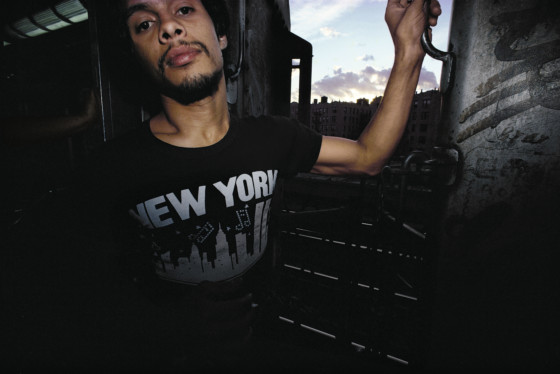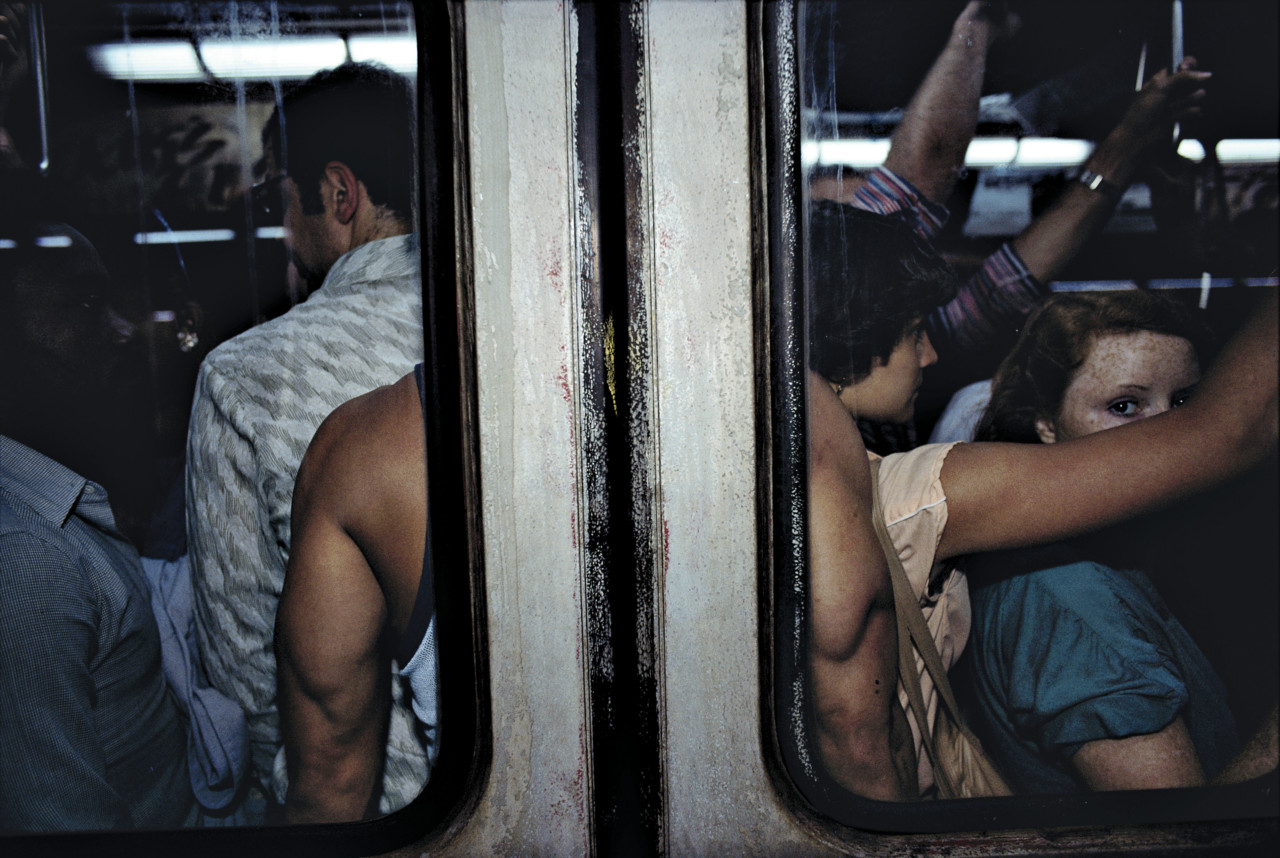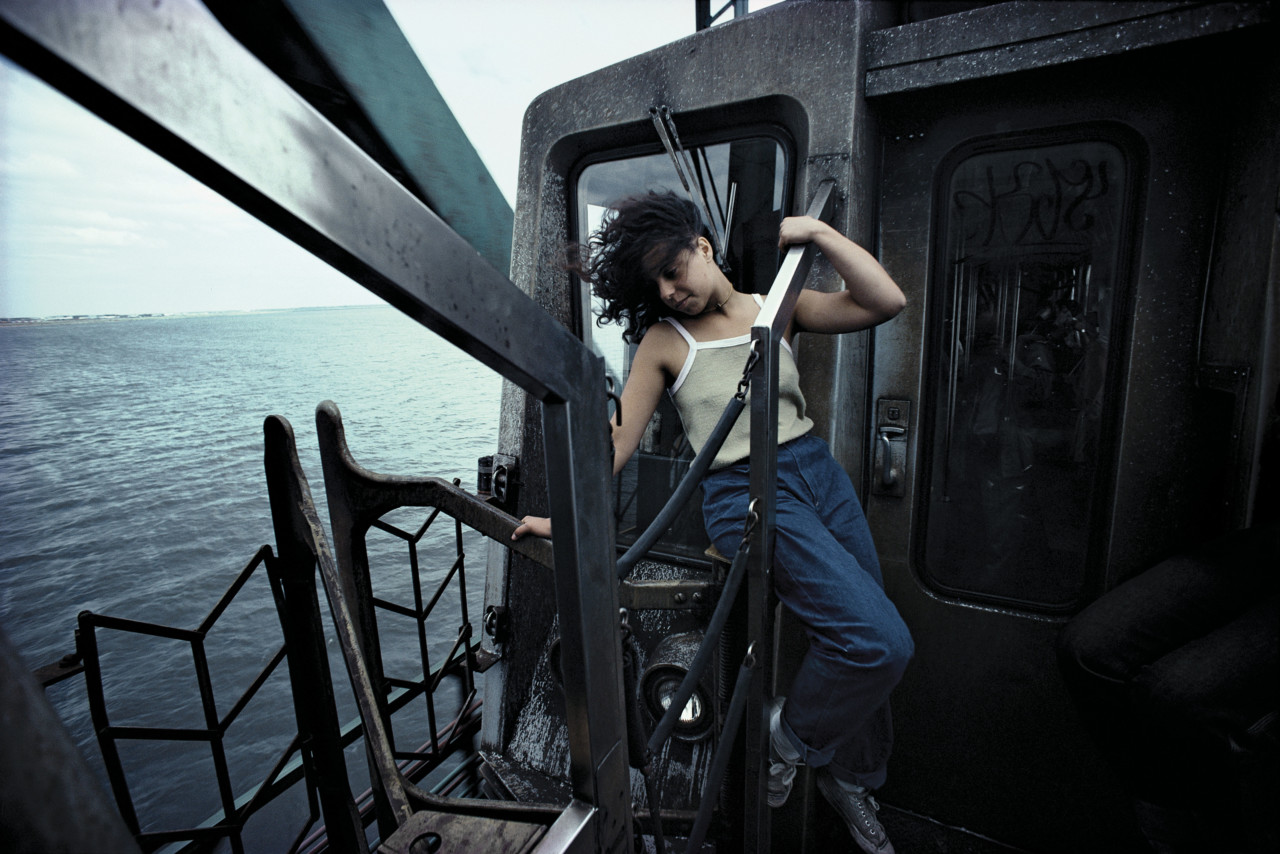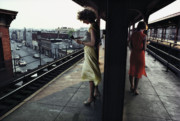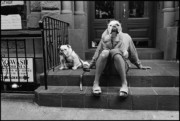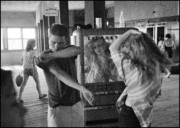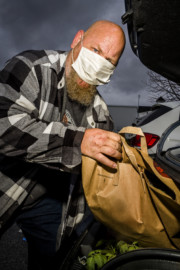Subway
Bruce Davidson's vivid exploration of New York's subway system in the 1980s is an epoch-defining series that marked the photographer's shift from black and white to color
“If I am looking for a story at all, it is in my relationship to the subject — the story that tells me, rather than that I tell” writes Bruce Davidson, who was inducted into the International Photography Hall of Fame on November 1, 2019.
The photographer’s critically acclaimed photo essay and book project, Subway, was “a voyage of discovery” for the American photographer; the result of half a decade spent exploring the ominous reaches of the subway system in the 1980s. Both a captivating study of light and color and a historical document of an elemental part of New York, Subway captures the many faces of the underbelly of this city.
The photographer’s descent into the city’s famed transit system followed a period of broader exploration in New York. After a spell of work as a producer on a movie, Davidson – as he writes in Subway‘s introductory text – felt a need to return to stills, to his roots:
“I began to photograph the traffic islands that line Broadway. These oases of grass, trees, and earth surrounded by heavy city traffic have always interested me. I found myself photographing the lonely widows, vagrant winos, and solemn old men who line the benches on these concrete islands of Manhattan’s Upper West Side.
I traveled to other parts of the city, from Coney Island to the Bronx Zoo. I revisited the Lower East Side cafeteria where I’d photographed several years before… The cafeteria was a haven for the elderly Jewish people surviving the decaying nearby neighborhoods. I photographed the people I had known there, survivors from the war and the death camps who had clung together after the Holocaust to re-root themselves in this strange land. I walked along Essex Street to visit an old scribe who repaired faded Hebrew characters on sacred Torah scrolls. He and his wife, both survivors of Dachau, worked together in their small religious bookstore. Occasionally, he’d allow me to take a photograph as he bent over the parchment with his pen. When the flash went off, he would wave me away. I would return later with prints that he put into a drawer, carefully, without looking at them. Sometimes, returning from his shop during the evening rush hour, I would see the packed cars of the subway as cattle cars, filled with people, each face staring or withdrawn with the fear of its unknown destiny.
The subway interior was defaced with a secret handwriting that covered the walls, windows, and maps. I began to imagine that these signatures surrounding the passengers were ancient Egyptian hieroglyphics. Every now and then, when I was looking at one of these cryptic messages, someone would come and sit in front of it, and I would feel as if the message had been decoded. I started to draw a connection between the Broadway islands, the neighborhood cafeteria, and the pious scribe on the Lower East Side.
The connection was the subway.”
"I wanted to transform the subway from its dark, degrading, and impersonal reality into images that open up our experience again to the color, sensuality, and vitality of the individual souls that ride it each day
"
- Bruce Davidson
Steadily deteriorating ever since the opening of the first underground line in 1904, by the time Davidson embarked on his project in the spring of 1980, the subway had reached its lowest ebb. Emblazoned with graffiti and bathed in the unsettling fluorescence of cheap strobe lights, for most, it was a perilous place replete with violent gangs and the homeless. Davidson however found, in this hostile landscape of decay, a captivating aesthetic experience. He switched to color, from his usual medium of black & white film, in order to truly capture the unique atmosphere and the people he encountered within it, all steeped in “an iridescence like that I have seen in photographs of deep-sea fish”.
"It's a great social equalizer … From the moving train above ground, we see glimpses of the city, and as the train moves into the tunnels, sterile fluorescent light reaches into the stony gloom and we, trapped inside, all hang on together"
- Bruce Davidson
We asked Davidson about his perspective on the work today and whether he thinks he would have been so drawn to the subject had it not been in such a state of disrepair: “[this] gave a tension and a purpose to my photographs,” he replied. “To explore, express, and encounter life as it was seen in the subway. I had what might have been called ‘tunnel vision.’”
“It’s a great social equalizer … From the moving train above ground, we see glimpses of the city, and as the train moves into the tunnels, sterile fluorescent light reaches into the stony gloom and we, trapped inside, all hang on together,” observes Davidson in the introduction to his book. Existing beneath a city defined by its diversity and promise of opportunity, the subway appears as a microcosm of this sprawling urban metropolis: a democratizing realm where individuals from all walks of life sit side by side in a setting as frantic and unruly as the streets above. Yet, as is the paradox of New York itself, these photographs also highlight the isolation of individuals within this sea of passengers; in his words “ [people] who are trapped underground, hiding behind masks, and closed off from each other.” Speaking to us about how he views the project today, Davidson reiterates this sentiment: “I feel that there was a passion and a purpose to photographing in the subway. We were all in the same boat and I was just expressing the everyday occurrences in the subway at that point in 1980. It’s a different subway, although you still have to watch your back.”
Disrupting the closed off realm of riders who captured his eye was a central part of Davidson’s process: “if they said, ‘Yes’, it was yes; if they said, ‘No,’ then I knew it was no forever.” Carrying with him a small, white, golf-trimmed wedding album filled with examples of his Subway work, on requesting to take someone’s picture, he would often bring this out to convince the subject of his intentions. Other times, the moment would be too perfect and Davidson would photograph without permission, explaining himself after the image was safely imprinted on his film.
"As I went down the subway stairs, through the turnstile, and on to the darkened station platform, a sense of fear gripped me. I grew alert, and looked around to see who might be standing by, waiting to attack"
- Bruce Davidson
Many were willing, enthusiastic even, about showcasing the realities of the subway system, but, with his expensive camera slung round his neck, Davidson also fell victim to attacks and muggings. “As I went down the subway stairs, through the turnstile, and on to the darkened station platform, a sense of fear gripped me. I grew alert, and looked around to see who might be standing by, waiting to attack.”
His variety of experiences are palpable in the pages of Subway; through Davidson’s photographs we are taken on a visceral journey through this vast network of darkened tunnels, vandalized platforms and eerie carriages. With renovations beginning on the subway during the eighties, today the transit system is in some ways unrecognizable. Asked about his perspective on the subway as it exists now and how it has changed, Davidson replies: “Of course you have to be aware of not standing too close to the platform and things of that nature to avoid catastrophe. But apart from that it has greatly improved to the point that there is a certain banality that bores me.”


